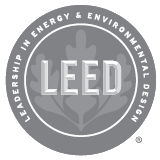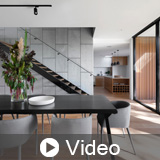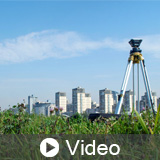Noise can negatively affect human health and productivity in the workplace. Poor acoustic performance can critically affect learning in schools and impact healing at healthcare facilities. It is imperative that design professionals balance acoustical design strategies when planning systems and indoor spaces. In this pres...
General Hour
136 Online Courses
|
|
In this course, we explain how to achieve the LEED v4.1 BD+C and ID+C MR: Sourcing of Raw Materials credit and how to specify environmentally friendly building materials. We review FSC certification, recycled content, and how bio-based materials could change the future of construction.
|
|
Ever wonder why that fluorescent-lit hallway gives you the creeps? Turns out, millions of people on the internet figured it out. When an anonymous internet post about endless yellow office spaces went viral, it accidentally created one of the largest public engagements with architectural psychology. This course explores...
|
|
As severe weather events and rising sea levels threaten to reshape our coastlines and devastate communities, our team discusses cutting-edge strategies to create resilient, sustainable structures that can withstand nature's fury. We explore LEED v4.1's robust framework for climate-adaptive design, exploring innovative te...
|
|
A LEED site assessment evaluates environmental features that the design of a sustainable site and building should take into consideration. A well-developed assessment conducted before or during the conceptual design phase may reduce project costs and risks, promote occupants’ health, and honor a site’s unique characteris...
|
|
What do a 2,400-year-old philosopher and today’s toughest client meetings have in common? More than you think. In this course, you’ll discover how ancient Greek Cynic philosophy can help you defuse conflict, win over clients, and keep your sustainable design goals on track. Packed with real-world case studies and practic...
|
|
Discover a radical new lens on design in this course on material vitalism—an approach that redefines materials not as passive stuff, but as active participants in shaping architecture. We'll explore how matter itself can tell stories, shape experiences, and even guide design choices, from the weathered warmth of timber t...
|
|
We're facing an unprecedented crisis of connection in our communities. While we've become more digitally linked than ever before, genuine human connection is becoming increasingly rare. As a design professional, you hold extraordinary power to address this crisis through the spaces you create. Your buildings don't just h...
|
|
In this course, we review the intent and applications for prerequisites and credits for the LEED v4.1 BD+C EQ category. We discover strategies to designing healthier spaces by improving indoor environmental quality for occupants. We discuss how indoor environmental quality can improve human health and well-being, worker...
|
|
Welcome to an exciting journey through the revolutionary world of bio-based circular materials that are reshaping how we design and build. This course explores innovative construction materials derived from agricultural waste, fungi, and renewable plant sources that offer design professionals unprecedented opportunities...
|

















